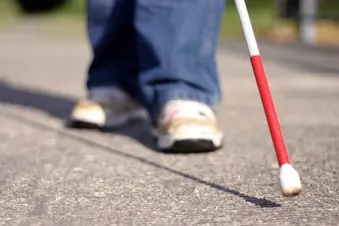
By the time you have trouble seeing, you've probably had diabetic macular edema (DME) for a while. Catching and treating it early can help stop it from getting worse and may reverse it.
People with DME tend to have other eye problems, too, and could end up having a hard time seeing.
Diabetic Retinopathy
The same sort of thing that's happening in your macula is also happening in the rest of your retina. Damaged tiny blood vessels swell and leak. They may close up, so no blood can get through. When you have more advanced retinopathy, more fragile blood vessels grow on the surface of the retina.
All of these can cause problems with your sight. You might see floating spots or more blurriness around the sides of your vision. You could lose your sight because of a detached retina.
Vitreomacular Traction Syndrome
VMT is a problem with your vitreous, the clear gel that fills most of your eyeball. It's attached to the retina.
As you get older, the gel shrinks and can peel away from your retina. It's usually not a big deal if it comes off all the way.
But sometimes it sticks to the macula, in the center of your retina. The tugging and pulling can change the shape of the macula and make it hard to see clearly.
This happens much more often with people who have macular diseases like DME.
Vision Loss
DME is the main reason people with diabetes lose part or all of their sight, especially the vision used when looking straight ahead. It usually takes many years for vision loss to happen with DME, but it can be much sooner when the very center of your macula is damaged.
If you've already lost some vision, talk to your eye doctor about aids that can help you see better. Also, ask about places that offer low-vision services, like a nearby medical school or community agency.
Protect Your Eyes
The key is to stay on top of your diabetes by keeping your blood sugar as close to normal as you can. This may be enough to turn things around.
Keep your blood pressure and cholesterol levels on target, too. Eating right and staying active can help you reach these goals and manage your weight.
Don't skip regular eye exams. They're the only way to catch DME before symptoms start. They also let your doctor know how well your treatment is working.
Show Sources
Photo Credit: E+ / Getty Images
SOURCES:
National Eye Institute: "Facts About Diabetic Eye Disease," "Facts About Macular Edema."
American Academy of Ophthalmology: "What Is Diabetic Retinopathy?"
The Macula Center: "Vitreomacular Traction Syndrome."
Review of Optometry: "Dissecting DME: A clinician’s role in diagnosing and managing diabetic macular edema."
Learn, Track, Share: A Patient Guide to Diabetic Macular Edema, Angiogenesis Foundation, 2013.